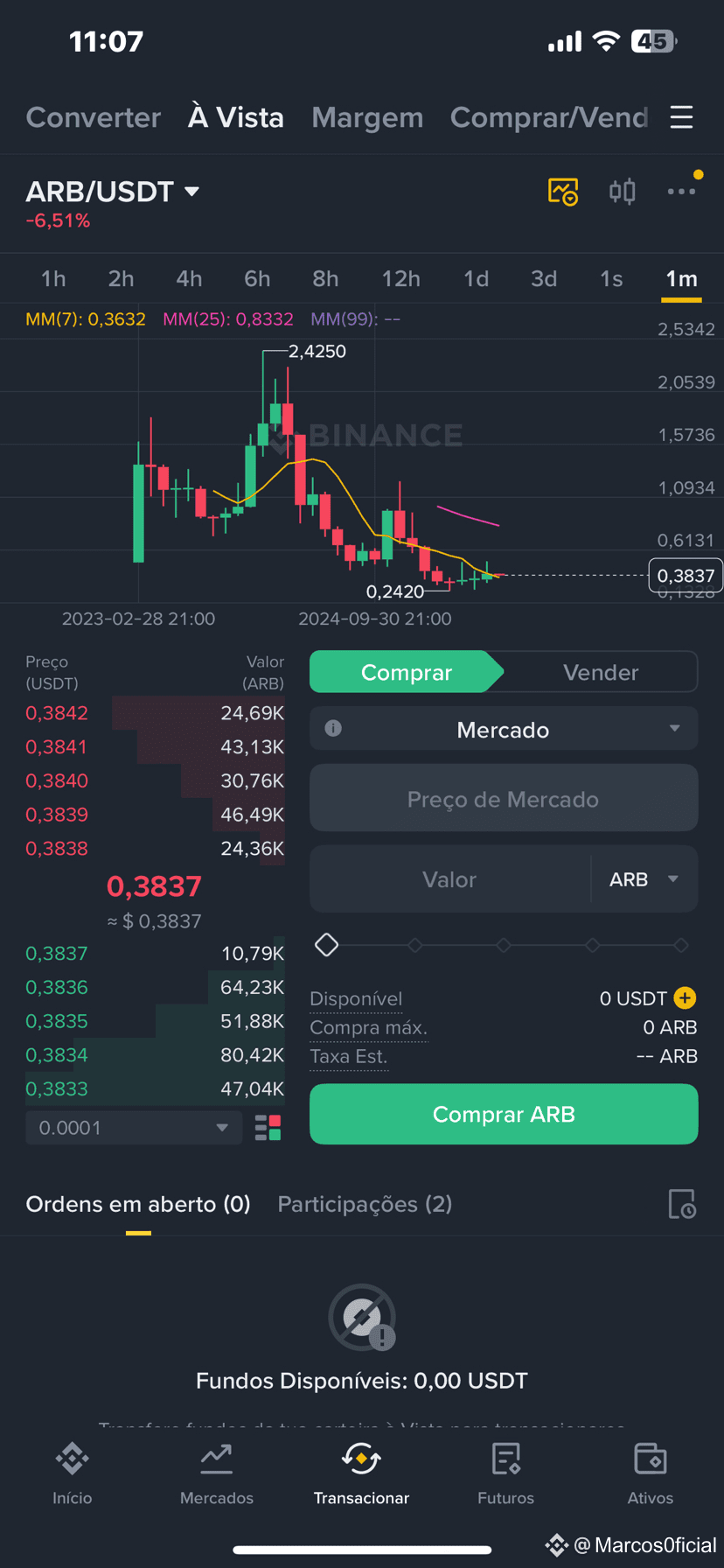Let's analyze $ARB the main factors that could influence the future price of Arbitrum (ARB). To do so, we consider project-specific data, market trends, technical analysis, macroeconomic factors, and general investor sentiment. Project-specific factors: ARB is a governance token with a fixed supply of 10 billion units. The DAO (Decentralized Autonomous Organization) is responsible for important decisions, such as updates and funding, which can directly impact the token's value. Since March 2024, the annual issuance of up to 2% of new tokens is planned, which can generate inflation and influence the price. As of August 2025, this issuance is already underway, and it's important to monitor how it is being managed. Furthermore, recent news highlights relevant partnerships, such as Robinhood building solutions on Arbitrum and Circle launching USDC on the Hyperliquid platform, which operates on Arbitrum. These integrations are likely to increase the use and demand for ARB.
Technical Analysis: Indicators show the 7-day Simple Moving Average (SMA) at 0.4318 and the 30-day at 0.41004, while the current price is at 0.39. The 7-day Relative Strength Index (RSI) is around 30.59, indicating oversold. Fibonacci retracements point to resistance near 0.463 (23.6%) and support at lower levels. The MACD histogram is negative, suggesting bearish momentum. In summary, ARB is technically in a downtrend but could be close to a recovery point if support holds. Market and Competition: Overall crypto market sentiment is neutral, with the Fear & Greed Index at 57. The Altcoin Season Index is low (35), indicating that capital is not flowing much into alternative coins at the moment. Arbitrum maintains a prominent position as a Layer 2 (L2) solution for Ethereum, with important integrations such as PancakeSwap's record volume and Circle's adoption of USDC. However, it faces competition from other L2s, such as Optimism and Base, which could affect its market share. PancakeSwap's integration with Arbitrum, which contributed to the increased volume, is a positive point.
Macroeconomic factors: Regulatory changes, especially related to stablecoins and decentralized finance (DeFi), are important. The adoption of USDC by Circle and Hyperliquid can be seen as a positive sign in this regard. Furthermore, Ethereum upgrades, such as Pectra, which reduce data costs for L2 solutions, could lower Arbitrum's operating costs, improving its profitability.
Conclusion: The main factors that could influence ARB's price include project developments (updates and partnerships), the competitive landscape, technical support and resistance levels, the regulatory environment, and the concentration of tokens among large investors. While there are positive signals that could boost the price, such as partnerships and technological improvements, there are also risks, such as inflationary pressure and volatility caused by whales. An important question to monitor is how upcoming governance proposals could impact ARB's value.